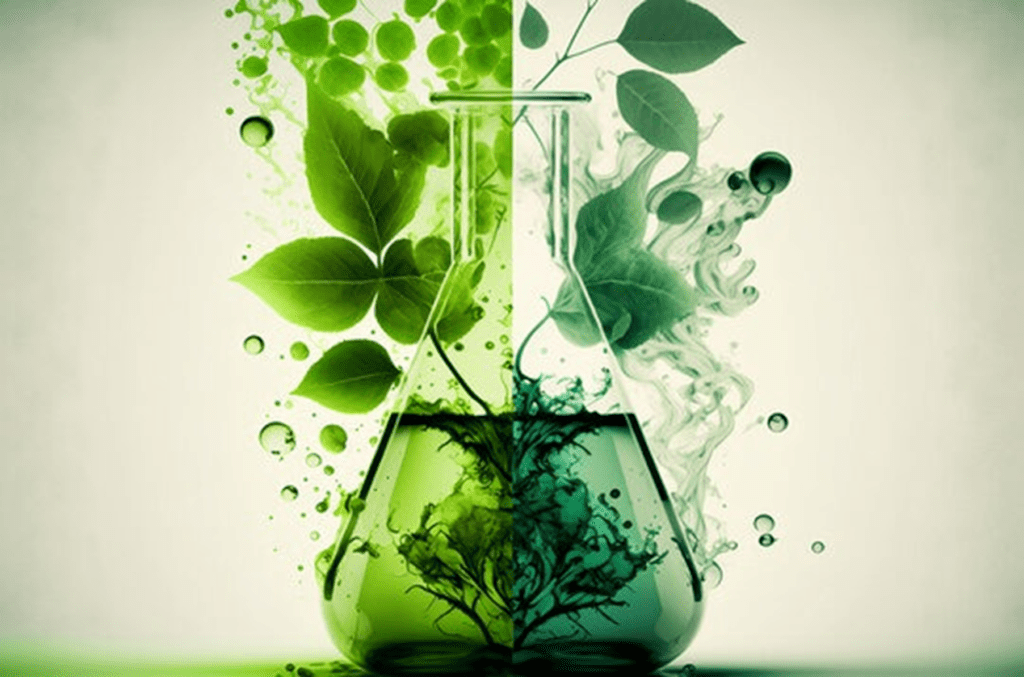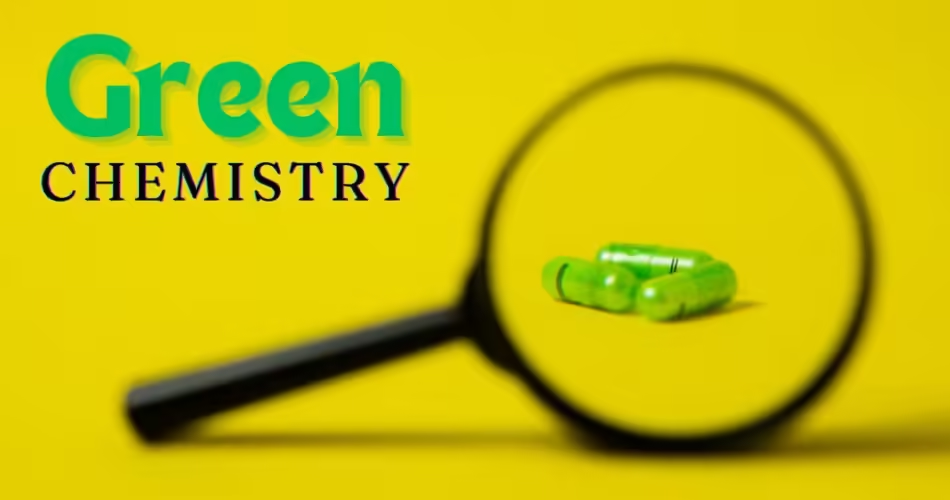This blog provides you with information of Green Chemistry. In the start, we discussed what is green chemistry. Then we studies about Examples of Green Chemistry. We also explained how green chemistry can prevent pollution. Then we discussed about the Importance of Green Chemistry. At the end, we explained the Principles of Green Chemistry. We discussed the Importance and Principles of Green Chemistry.
What is Green Chemistry?
Green Chemistry is the sustainable chemistry. Green Chemistry is basically the design of chemical products and products that eliminate or reduce the use of generation of hazardous substances. The aim of green chemistry is to make alternatives that are less harmful or harmless for human beings.
Green chemistry is the area of chemistry and chemical engineering that focuses on minimization or elimination of harmful products and materials. We can use Green Chemistry in the whole life-cycle of the product including its design, manufacture, use and disposal.
The idea of greening science created in the business and administrative networks as a characteristic development of contamination counteraction drives. In our endeavors to further develop crop assurance, business items and medications, we likewise hurt our planet and people.
Green science makes the EPA’s order a stride further and makes another reality for science and designing by requesting that scientific experts and specialists plan synthetic substances, compound cycles and business items in a way that, in any event, dodges the production of toxics and squander.
We can foster synthetic cycles and earth-accommodating items that will forestall contamination in any case. Through the act of green science, we can make options in contrast to dangerous substances. We can plan compound cycles that decrease squander and lessen request on reducing assets. It can utilize processes that utilization more modest measures of energy. We can do all of this regardless keep up with monetary development and open doors while giving reasonable items and administrations to a developing total population.
Example of Green Chemistry:
A good example of Green Chemistry, is the manufacture of Biodegradable Plastic. This plastic is different from traditional plastic that does not degrade in the environment. We can use this plastic for any purpose same as normal plastic but the plus point is that it will play a great role in Plastic Waste Management. And it will degrade naturally in the environment. So, it does not harm the living organisms in any way and degrade on its own without any harm.
How Green Chemistry Prevents Pollution?
Green Chemistry diminishes contamination at its source by limiting or disposing of the perils of synthetic feedstocks, reagents, solvents, and items. This isn’t equivalent to tidying up contamination (additionally called remediation), which includes treating waste streams (end-of-the-pipe treatment) or cleanup of ecological spills and different deliveries. Remediation might incorporate isolating perilous synthetic substances from different materials, then, at that point, treating them so they are presently not dangerous or concentrating them for safe removal. Most remediation exercises don’t include green science. Remediation eliminates dangerous materials from the climate; then again, green science holds the risky materials back from being created in any case.
In the event that an innovation diminishes or disposes of the dangerous synthetics used to tidy up natural impurities, this innovation would likewise qualify as a green science innovation. One model is supplanting a perilous sorbent (chemical) used to catch mercury from the air for safe removal with a powerful, yet nonhazardous sorbent. Utilizing the nonhazardous sorbent implies that the unsafe sorbent is never produced thus the remediation innovation meets the meaning of green science.
Importance of Green Chemistry:
Green Chemistry is very important in our daily life and on global level. In daily life, we can use less harmful products and processes that are better alternatives than hazardous products. These products are derived as a result of research in Green Chemistry. It is also called as Sustainable Chemistry, because it leaves no waste into the environment and is responsible for its own waste. In the same way, if we start using products from green chemistry on global level, our environment will be less hazardous or polluted than before. In this way, we can get rid of the global pollution and GHGs emissions. This blog contains Importance and Principles of Green Chemistry.

Principles of Green Chemistry:
Following are the principles of Green Chemistry:
Prevention of Waste:
We should understand this concept that it is better to prevent waste than cleaning up the waste. Once its your life style, it is easy to prevent waste than to clean up tons of wastes every day.
Atom Economy:
This concept is about manufacturing of synthetic methods. These should be designed to incorporation of all materials used in the process into the final product.
Less Hazardous Chemical Synthesis:
We should try to used those processes and products for chemical synthesis that are not toxic or less toxic than other traditional products and processes. In this way we can avoid harm.
Designing Safer Products:
Safer products mean that the chemical products of daily use should less toxic as possible and we should do further research for manufacturing of more safer products than those we have today.
Safer Solvents and Auxiliaries:
Use of auxiliary substances (e.g. solvents, separation agents, etc.) should be made unnecessary wherever possible and innocuous when used.
Design for Energy Efficiency:
Energy requirements of chemical processes should be recognized for their environmental and economic impacts and should be minimized. If possible, synthetic methods should be at ambient temperature and pressure.
Use of Renewable Feedstock:
We should select the raw material that is for manufacturing of chemicals should be renewable and reusable. It should be economically and technically sound to use them without extra burden.
Reduce Derivatives:
The derivations such as temporary modification, should be minimized or it should be avoided as much as possible. Because derivations requires additional reagents and can generate waste.
Catalysis:
Catalytic reagent should be used because catalytic reagents are superior to stoichiometric reagents. These catalytic reagents should be as selective as possible.
Design of Degradation:
Degradation is a big problem for present era. The products that we make and dispose are naturally decomposable. It is important to design new products in such a way that they could be decomposable.
Real-time Analysis for Pollution Prevention:
Analytical methodologies need to allow for real-time, in-process monitoring and control prior to the formation of hazardous substances.
Inherently Safer Chemistry for Accident Prevention:
Substances and the form of a substance use in a chemical process should be chose to minimize the potential for chemical accidents, including releases, explosions, and fires.

Conclusion:
Green Chemistry is the is the chemistry to design products that eliminate or reduce the harmful effects of that product on the environment. It also works for providing better alternatives for the generations to avoid harmful effects of hazardous substances. We can call it as green engineering in which we synthesize safer and pollution free products and chemicals for human use. This is environmentally friendly chemistry. We discussed about its importance, its principles as well as how Green Chemistry helps in the prevention of the pollution.
To learn about more topics, Click the links below:


Comments